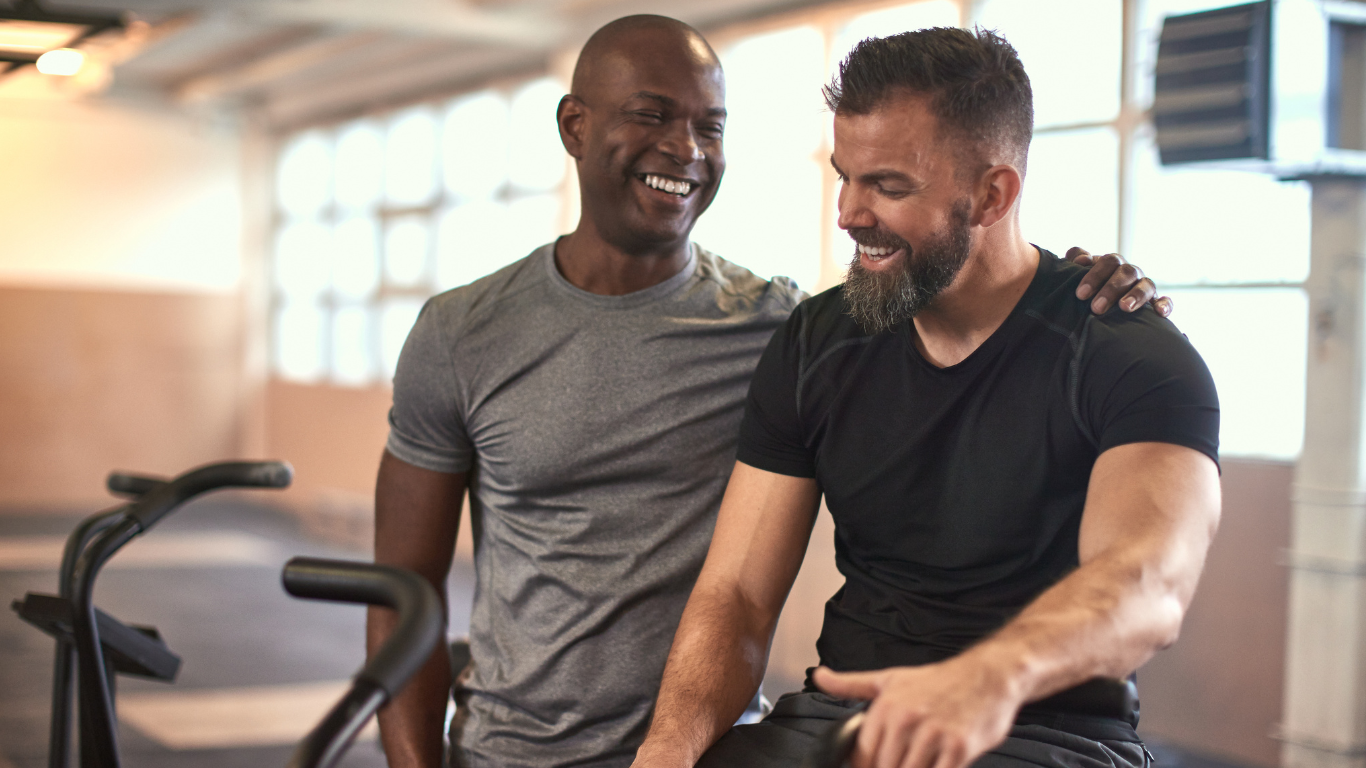
Staying Active Through Menopause: Movement, Motivation & Mindful Choices
Posted on 20th October 2025 by Paul FrankhamMenopause is a natural transition, but it can bring physical and emotional changes that make staying active feel more challenging. The good news? Movement can be one of your greatest allies during this time—supporting your mood, energy levels, bone health, and overall well-being.
What exactly is menopause?
Menopause, like puberty, is a natural phase of life. Think of it as your body’s natural evolution—it’s not a malfunction, it’s a transition! Menopause marks the point when a woman has not had a menstrual period for 12 consecutive months, signifying a cessation of egg release from the ovaries. Unfortunately, it remains a somewhat taboo topic in society. We often don’t discuss what it truly is or how it affects us, leading to a general lack of knowledge about menopause.
How is perimenopause different from menopause?
Perimenopause refers to the transitional phase leading up to menopause, during which hormonal changes occur gradually. It is the opening act before menopause takes the stage. During this time, your hormones start doing their own little dance, and it can last several years. You may experience symptoms like hot flashes, mood swings, anxiety, urinary urgency, vaginal dryness, and sleep disturbances for years before your last period. In fact, you may begin noticing the first signs of perimenopause in your late thirties, and it is totally normal.
Okay, so how can I deal with menopause symptoms?
Good news: you don’t have to sit back and suffer! Regular exercise can be your best friend during this phase of life. The research points out that regular physical activity plays a powerful role in managing menopausal symptoms and improving overall well-being. It helps reduce symptoms like hot flashes, improves mood, enhances sleep quality, aids weight management, and reduces the risk of chronic conditions like cardiovascular disease, osteoporosis, and diabetes.
Can exercise actually help with my symptoms?
Oh, absolutely! Here’s how:
- Bye-bye, Hot Flashes: Regular workouts improve blood circulation and hormonal balance. Many women find that exercise helps to reduce those annoying temperature surges.
- Mood Boost: Physical activity boosts neurotransmitters like dopamine and serotonin, increasing endorphins and enhancing self-esteem, which helps manage mood swings.
- Sleep like a Queen: Struggling to sleep? A good workout routine—especially moderate-intensity exercise—can help you catch those ZZZs.
- Weight Control: While menopause can potentially lead to increased abdominal fat, regular exercise combined with a balanced diet can help maintain a healthy weight.
- Pain Relief: Achy joints? Exercise helps ease stiffness and keeps you moving comfortably.
Find Activities You Enjoy: The best kind of exercise is the one you actually want to do. Whether it’s swimming, yoga, dancing, or walking in nature—choose something that brings you joy. When you enjoy the movement, you’re more likely to stick with it.
Engage Socially: Gyms aren’t for everyone—and that’s okay! Many women find traditional fitness spaces intimidating or uninspiring. That’s why group-based classes like Menopause Pilates are so powerful. These women-only environments offer more than just exercise—they foster community, personal growth, and mutual support. Joining a fitness group or class can help you stay motivated, build friendships, and make movement something to look forward to.
Be Consistent: Consistency is key. Try to establish a weekly routine that includes movement, even if it’s just a few short sessions. Regular activity helps regulate hormones, improve sleep, and boost your mood.
Listen to Your Body: Menopause symptoms can vary day to day. On tougher days, opt for gentler activities like stretching, restorative yoga, or a slow walk. The goal is to stay connected to your body—not push through discomfort.
Common Questions:
“I know exercise is good for me, but gyms just don’t feel welcoming. Any advice?”
You’re not alone! Many women feel this way. Look for women-centred spaces or group fitness classes that focus on support and enjoyment. Dance classes, yoga groups, running clubs, and Pilates sessions often offer a more relaxed and inclusive vibe. Research shows that women-only exercise environments can foster a sense of community and empowerment—helping you build lasting habits and feel more in control of your health.
“I’ve heard about pelvic floor exercises—are they worth it?”
100% yes! Pelvic floor exercises help with symptoms of Genitourinary Syndrome of Menopause (GSM), such as vaginal dryness, discomfort, and bladder issues. Strengthening the pelvic floor muscles improves blood flow, vaginal elasticity, and sensitivity, addressing concerns like stress urinary incontinence, pelvic organ prolapse, and incomplete bladder emptying. These exercises, when supervised by a trained healthcare professional, are simple, effective, and can make a huge difference in how you feel during and after menopause.
“How much exercise should I aim for, and what kind is best?“
It’s all about finding what works for you! Here’s a guideline:
- Aim for 150 minutes of moderate aerobic exercise a week. Brisk walks, swimming, or even dancing around the house count!
- Add in strength training twice a week to keep your muscles and bones strong.
- Mix in some flexibility and balance exercises, like yoga or Pilates, to reduce stress and keep your body limber.
- Pelvic Floor Exercises: Practice pelvic floor exercises regularly to address GSM symptoms and support pelvic health.
“How can I stay motivated to maintain an active lifestyle during menopause?“
- Consistency is Key: Establish a routine to meet weekly exercise goals.
- Find Enjoyable Activities: Choose exercises you love to stay committed. It can be swimming, yoga, or group fitness, or anything you enjoy.
- Listen to Your Body: Adapt exercises based on your comfort and symptoms, opting for gentler activities on challenging days.
- Engage Socially: Join fitness groups or classes to build connections and make exercise more enjoyable. Most of us are not active enough, because gyms can be intimidating at times or traditional exercise programs off-putting. That’s why group-based classes such as Menopause Pilates are great – these are women only environments prioritising and cultivating an opportunity for not only exercise but also personal growth, community bonding, and mutual support
“Is exercise really the key to thriving during menopause?“
It’s a game-changer! Many women are inactive during menopause despite the guidelines’ recommendations, as per research. Meanwhile, staying active helps you manage menopause symptoms, boosts your physical and mental health, and sets you up for a healthier future. Plus, it’s a chance to reclaim your power! By embracing an active lifestyle, we can take proactive steps toward reducing discomfort and fostering a healthier, more fulfilling life. As we continue to understand the complexities of menopause, let’s prioritise physical activity as a cornerstone of women’s health.
Blog post written by Alena Zakharova, Pelvic Health Physiotherapist



